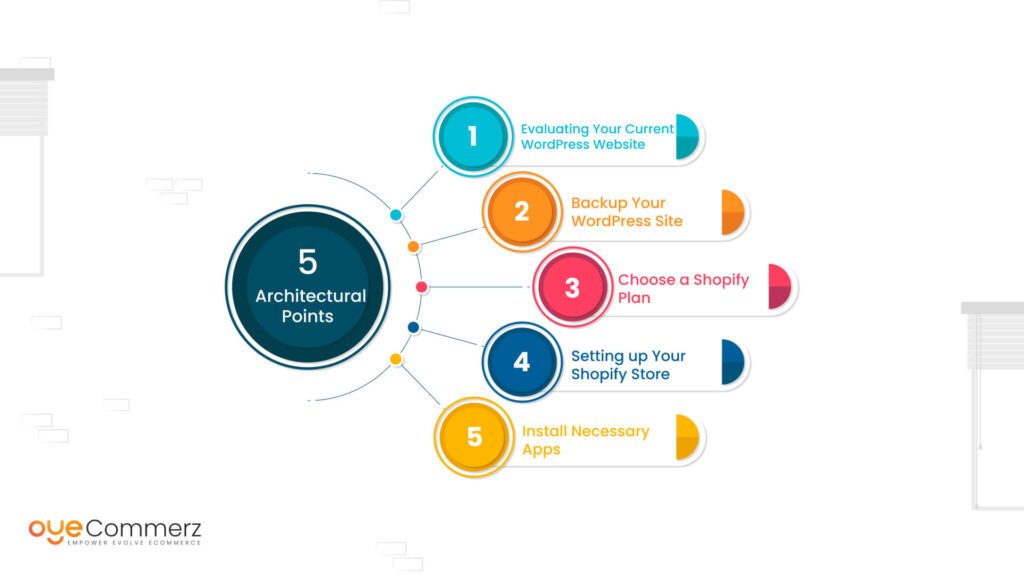Effortless Transition from WordPress to Shopify: A Comprehensive Roadmap for E-commerce Growth
Effortless Transition from WordPress to Shopify: A Comprehensive Roadmap for E-commerce Growth
Blog Article
Shifting from WordPress to Shopify marks an exciting step toward streamlining your e-commerce processes. As businesses expand, choosing a solution that supports scalability, UX, and customization is essential. Shopify has emerged as a favorite for e-commerce professionals, offering superior flexibility, data protection, and ease of use. In this guide, we will delve into why this migration is a game-changer, highlight the benefits, and share actionable steps to ensure a seamless transition.
1. Top Reasons to Transition from WordPress to Shopify
The combination of WordPress and WooCommerce, has served countless e-commerce platforms. However, as companies expand, issues like reliance on plugins, security vulnerabilities, and complex setups can hinder growth. Shopify, designed explicitly for e-commerce, eliminates these issues with an all-in-one, user-friendly solution. Real data supports this shift—Shopify hosts over 4.4 million websites globally, with a documented 10% boost to sales conversion rates for numerous merchants post-switch.
2. Key Benefits of Shopify for E-commerce Success
Shopify’s powerful platform caters for scaling businesses. Its standout features are:
- Effortless Design Flexibility: Shopify offers over 80 expertly crafted themes.
- Built-in Features: Features like Shopify Payments and built-in SEO streamline operations.
- International Expansion: Multi-currency support and regional customization enable brands to reach global markets.
Additionally, Shopify delivers an availability percentage of 99.98%, guaranteeing your website is always operational.
3. Getting Ready for Your WP-to-Shopify Transition
Before migrating, evaluate your current store. Review inventory details, client information, and SEO performance. Resources such as Shopify’s Migration Kit or third-party solutions can simplify this process. Develop a comprehensive plan, ensuring all resources—product descriptions, images, and blog content—are optimized for transfer.
4. The Importance of Accurate Data Migration
Transferring your data forms the foundation for a smooth platform switch. When moving from WP to Shopify, prioritize:
- Product Information: SKU, descriptions, and groupings.
- Client Information: Emails, purchase records, and preferences.
- Search Engine Considerations: Retain meta tags, URLs, and forwarding paths to avoid SEO losses.
Leverage tools such as LitExtension to streamline data transfer while reducing mistakes.
5. Tailoring Your Shopify Store to Fit Your Brand
After the move, customizing your Shopify store helps it reflects your business identity. Utilize Shopify’s intuitive page builder to design pages effortlessly. Shopify's templates are mobile-responsive, providing a smooth UX across devices—a critical factor, since 74% of online shopping is generated by mobile visitors.
6. Maintaining SEO During Migration
SEO is vital for preserving your visibility during migration. Shopify excels in SEO with clean URL structures, preloaded features, and seamless blog integration. Make sure you:
- Implement 301 redirects for old URLs.
- Optimize new pages with keyword-rich content.
- Leverage plugins like Plug in SEO to track analytics post-migration.
7. Post-Migration Testing
Once the migration is complete, conduct thorough testing.
Review: - Website speed (Shopify delivers faster speeds in contrast with WP).
- Functionality of payment gateways and transaction flow.
- Mobile responsiveness.
Quality assurance ensures your store delivers a seamless shopping journey from the start.
8. Case Study of a Successful Migration
An example of effective platform switching is Gymshark, a fitness apparel brand that transitioned to Shopify. Product data migration Post-migration, the company experienced a 60% boost in mobile sales and significantly lowered site downtime. This showcases the potential of Shopify in driving online business success.
9. Overcoming Common Migration Issues
Migration is not without obstacles, such as information accuracy and reconfiguring custom functionalities. However, Shopify’s extensive assistance Shopify store optimization and third-party experts simplify the process. Collaborating with experienced Shopify developers ensures a smooth transition.
10. Starting Your Journey with Shopify
Switching from WordPress to Shopify marks a strategic approach to online retail. By focusing on growth, streamlining operations, and improving buyer satisfaction, Shopify empowers businesses to succeed in competitive markets.
Final Thoughts
Transitioning from WordPress to Shopify offers a smart solution that can significantly boost your online business performance. With a well-structured strategy, the appropriate resources, and expert support, you can unlock new growth opportunities.
Excited to start the journey? Let’s discuss how our Shopify migration services can revolutionize your e-commerce platform. Get in touch today, or consider: Is it time to seize Shopify’s advantages for your store?
 Report this page
Report this page